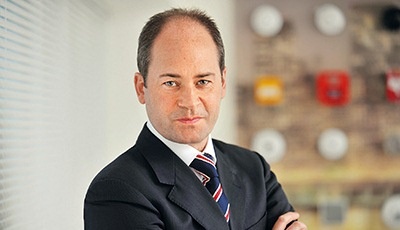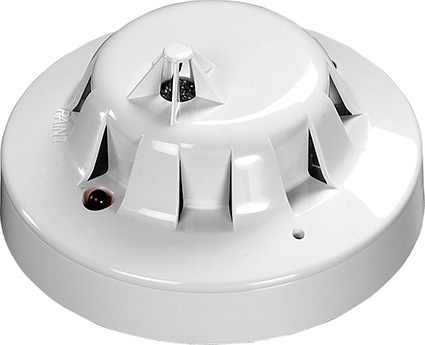Fire Detection: A Resolution to Reassess
Paul Pope, Business Innovation Manager EMEA at Apollo, suggests that while January might be the time for personal resolutions, building owners and those responsible for fire detect...


Paul Pope, Business Innovation Manager EMEA at Apollo, suggests that while January might be the time for personal resolutions, building owners and those responsible for fire detection technology should also be making a resolution to review their systems with their installers and specifiers to ensure they're still up to the job.
So often we hear of sites overhauling their fire detection system because they've become troublesome, unreliable, subject to too many false alarms and are providing poor or no intelligence for the complexities required in modern fire detection and protection systems. It seems a shame, however, that this overhaul only takes place when fire detection systems are starting to creak at the edges, cost money and are generally failing to deliver. How much time and money could organisations save if we encouraged a more proactive approach to assessing fire detection technology? With this in mind, perhaps it's time we made this year's New Year's resolution about just that - minimising false alarms and maintaining certified fire detection and fire protection measures by overhauling technology that's no longer suited to what it's being asked to deliver.
Why Change?
Take a look around your workplace - what's changed from this time last year? The chances are something will be different. Since January 2013 you may have a new use/risk for a room, more staff, a different building layout and chances are, the requirements for your fire detection system will have also changed and it's something you probably have not even thought about. It's your responsibility to give your fire detection specialists all the information that's needed to ensure that they still have the right fire detection and protection equipment in the right place to protect you.
Choosing the right technology for any environment can significantly reduce the likelihood of false alarms and more importantly the right sensor detection and protection for the risk. Leaving malicious interference to one side, false alarms are usually caused by the fire system reacting exactly as it is designed to do; it will raise an alarm because it has sensed something that it thinks looks like the symptoms of a fire, but is later discovered to have come from a non-fire source. More often than not the technology is rarely to blame - it's the decisions we make to install what we do where we do that is at fault. This is why it's vital that even small changes of use need to be considered (such as an old office becoming a hot drinks station) to help establish whether the fire detection equipment could identify a symptom of fire from a non-fire source.
The Discovery range from Apollo is one example of a product ideally suited to changes such as that above. Each detector has different certified sensitivity settings, so that fire detectors can be ‘fine-tuned' to the local environment - so office to drinks station may not need a new detector but a ‘re-tuning' of the current one to allow for steam produced from a kettle. The five different modes offered on this range are designed to take account of the variations in fire detection requirements, as, for example, the requirements of a cleanroom will be very different from that of a boiler room.
We are fortunate to be in a position where technological advances provide us with a broad scope of detection equipment that can provide coverage in almost every situation. From optical (photo-electric) smoke detectors (which respond particularly well to slow-burning, smouldering fires) to multisensor detectors providing smoke and heat sensors (combining optical readings with temperature change to give a rapid accurate response) the choice is, almost, endless. Combining this with the open protocol approach favoured by some manufacturers, such as Apollo, a subtle change in use in any building presents few challenges.
Fire detection is not a static business, the technology and standards move on, but more importantly, the places it protects, change. It's our responsibility as fire detection experts to ensure that we are always providing the most appropriate needs for each and every one of clients, helping them to minimise needless false alarms and ensure that lives and property continue to be protected. However, this responsibility also extends to you, the site owner, to keep us updated with any changes, so make it your New Year's resolution to review your fire detection needs to continue protecting life and property at your business.
most read

Assa Abloy's battery-powered Aperio KL100 secures lockers
Boost workplace security and operational flexibility by securing more than just doors.

VIP-Lounge Interview: Marco Mille, Global Head of Security, Siemens AG
VIP in the World of Security: Marco Mille, Global Head of Security at Siemens AG

Liverpool Heart and Chest Hospital Transforms Security with Verkada’s Hybrid Cloud Technology
NHS Trust boosts safety and efficiency with Verkada’s cloud-managed cameras and AI-powered incident response

The Benefits of AI-based Video Surveillance Solutions for Sports Venues
Dallmeier Interview: Artificial intelligence Makes Stadiums Smarter

GIT SECURITY AWARD 2026 - The winners have been announced!
GIT SECURITY AWARD 2026: The best safety and security solutions of the year - now an overview of all winners









